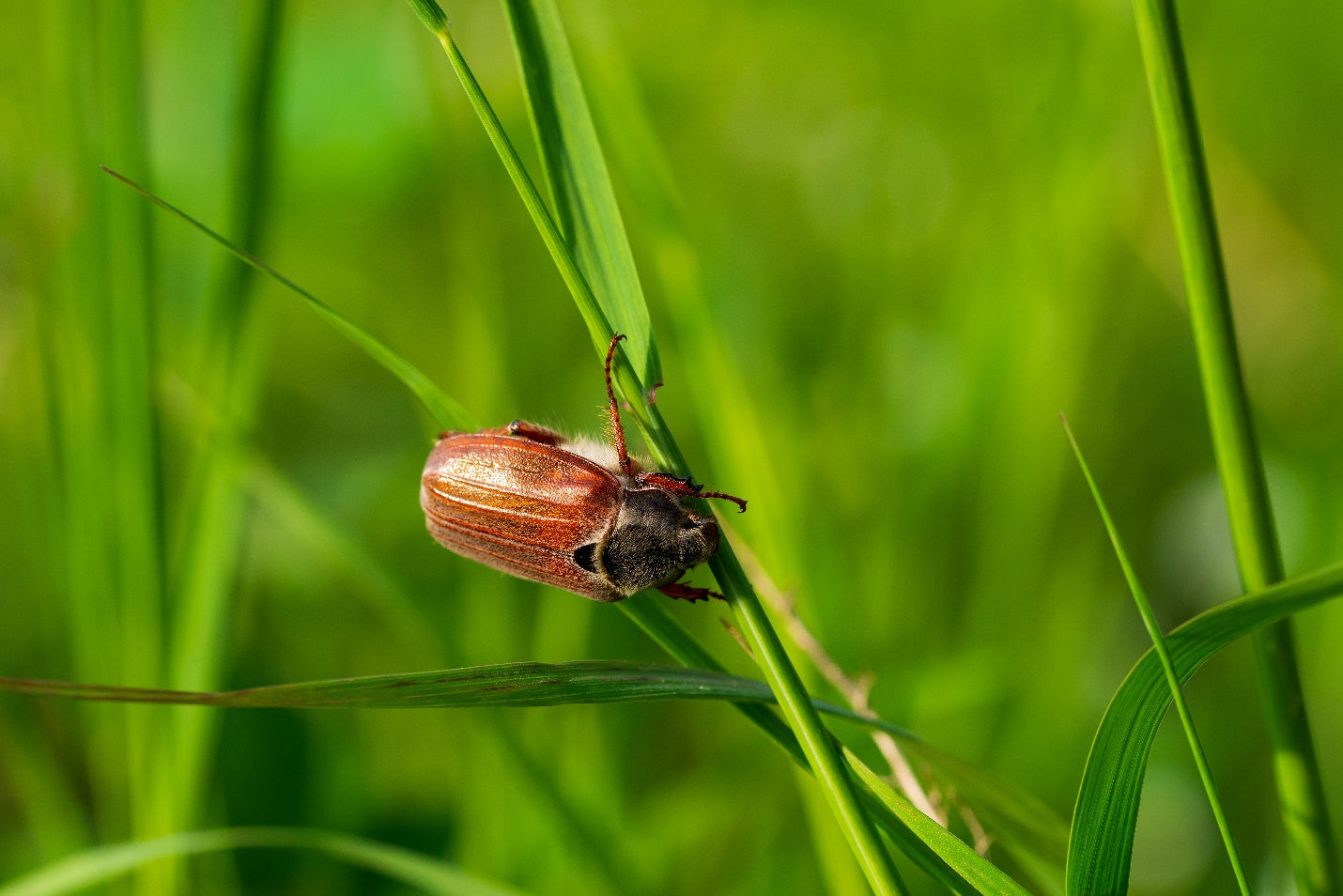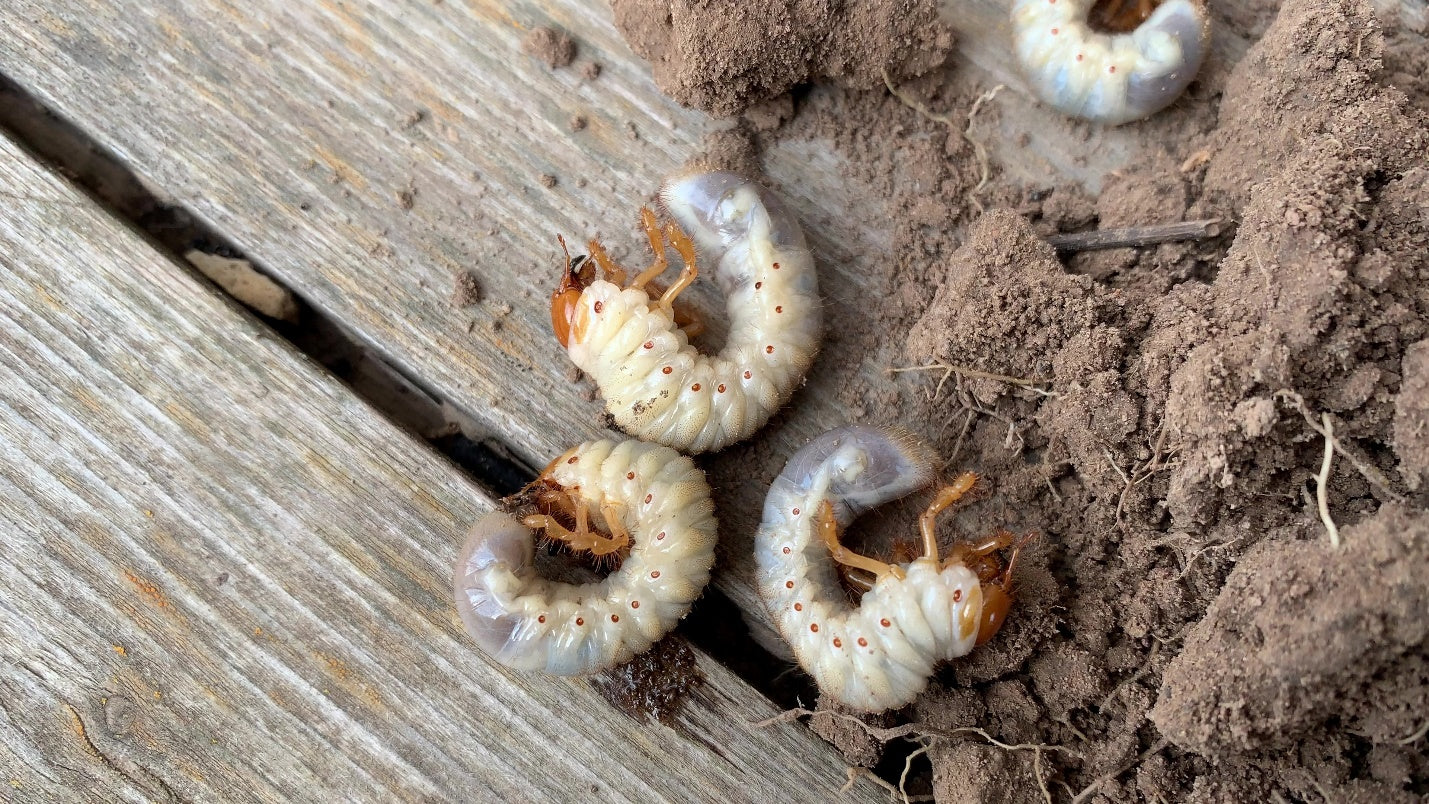Everything You Need to Know About June Bugs
In the summertime, you may be on the lookout for biting or stinging insects like fire ants, yellowjackets or mosquitoes that make spending time outdoors less than enjoyable. However, these warm-weather pests aren't the only ones that make you want to stay indoors. Late spring to early summer is when June bugs make their appearance. While they don't bite or infest your home, June bugs can do a number on your yard or garden, so most homeowners want to know what they can do to get rid of them or prevent them from moving in during that time.
What Is a June Bug?
June bugs, also known as June beetles or May bugs, are a common pest for gardeners and farmers, as their larvae present a huge problem for plants and lawns. They get their name because they tend to show up in June in North America. There are around 260 different types of June bugs that each pose a different kind of threat, but these are the two most common types that may cross your path:

Common June Bug
Common June bugs can range in length from 12 to 35 millimeters and vary in color from blackish to mahogany. They have no markings and have a hairy texture on their under-bodies. While the adult bugs enjoy feasting on fruits, vegetables and lush foliage, the larvae cause the most damage because they commonly eat the roots of backyard plants and lawns, leaving brown patches and decimated leaves in their wake.
June bugs rest during the day and take flight in the evening. They are attracted to light, so homeowners should keep their windows closed in May and June to prevent the bugs from intruding. Luckily, these bugs are otherwise harmless and will not bite you or your pets, so it's not a big deal if they do get in your home.
Green June Beetle
The green June beetle is another common beetle active during the summer. This beetle is slightly smaller than the June bug, measuring 15 to 22 millimeters, and most of its body is a shiny green color, giving it a bright and noticeable appearance. The green June beetle is most commonly found on the eastern U.S. coast, from Georgia up to Maine.
These pests will feed on fruits and berries, which can be detrimental to farmers and home gardeners. Like the common June bug, green June beetle larvae will nibble on your lawn or turf grass, posing another threat to your backyard. If you have a green June bug issue, it may be time to explore some pesticide options.

Life Cycle
When dealing with the different types of June bugs, it helps to understand their life cycle. Both the June bug and green June beetle have similar life cycles, lasting for one year. The female will lay between 60 and 75 eggs underground during a two-week period in the mid-summer months. After around 18 days, the eggs will hatch, and the grubs emerge. These grubs are white and have a brown-black head.

The larval stage lasts around 9 to 10 months and ends with the larvae pupating. These larvae will feed on the roots of plants, proving to be a massive nuisance to farmers and gardeners. The pupal stage lasts for three weeks, after which the pupa will begin transforming into its adult form. This stage is when June bugs take on their usual shape and reddish-brown or metallic-green color. The adults will eventually appear when the weather is at its hottest, to feed on foliage and fruits.
June Bug Tips and Facts
The main way to get rid of June bugs is by covering your crops with pesticides. This isn't ideal, as pesticide chemicals could enter the water supply, causing a need to purify the water and affecting animals, humans, and wildlife.
But green June beetles only go after decaying and already broken fruits. If something doesn't have an opening, it won't go after it. If you can take away any other predatory insects, you could eliminate the green June beetle. This is something to talk to an experienced professional about but is another alternative to protecting your crops.
While these bugs don't sting or bite, they also don't carry viruses like mosquitoes do, so there is no threat to being around one. While they could make your lawn look patchy, they are more annoying than anything if you don't have a garden to worry about.
When you see a June bug turned over, it may not be dead. When they get tired, they plop over and take a rest. You might notice them try to wriggle themselves back over after a bit once they are ready to go choose violence on your garden again.
What Are June Bugs Good For?
While you may find June bugs annoying when they swarm your outdoor lights and munch on your plants, they are an important food source for other wildlife. Lizards, birds, frogs and rodents enjoy crunching on these pests, and having these other animals around helps control other summertime insects.
June bugs are a high-protein, fatty snack to provide plenty of calories to our friends like racoons, skunks and several species of birds, like the gorgeous barred owl. Whether or not you would, the Bear River people located in Northwest California have been known to roast June bugs over a fire as a treat. There are still plenty of people who use dried June bugs in recipes and for holistic medicines.
Eliminate June Bugs with MosquitoNix®
If you don't have a garden, crops or other outdoor area to worry about, you could almost appreciate the beauty of these bugs, especially the green June beetle. But because of the nature of these bugs, if you have a garden they are ruining or a yard they are tearing up, you will need help kicking them out.
If you notice a June bug or green June beetle infestation in your backyard, don't wait for the problem to go away on its own. Since most of these insects' life cycles occur underground, it will be quite difficult to exterminate the population by yourself. If you're tired of seeing beetles in your backyard and dealing with the destruction they cause, contact MosquitoNix®. We have extensive experience removing beetles and other summer pests from your home and yard. Contact our professional customer service team to learn more about our services and to receive a free cost estimate.
Leave a comment
Comments will be approved before showing up.





